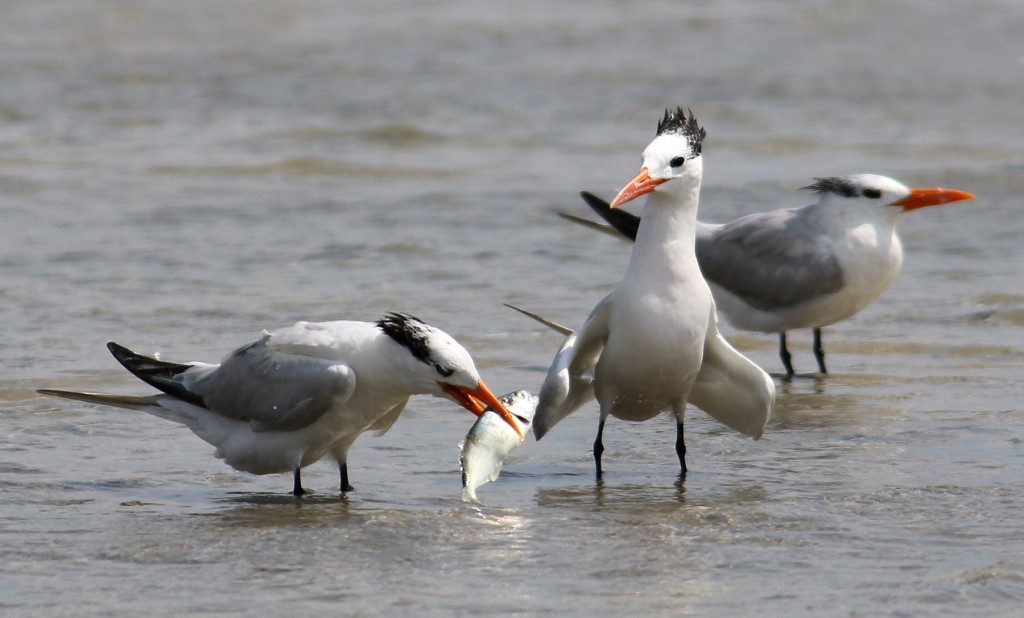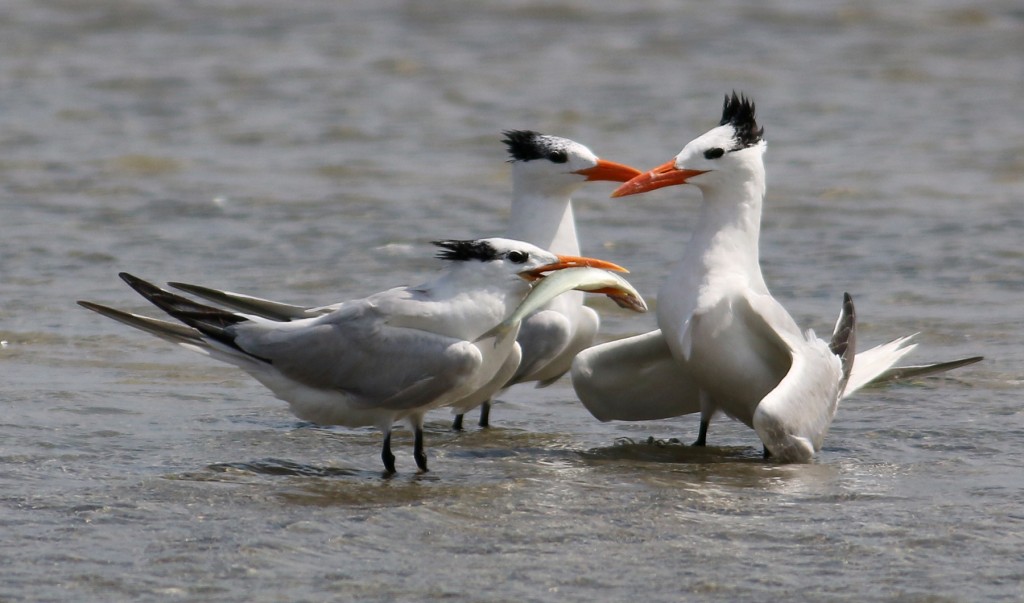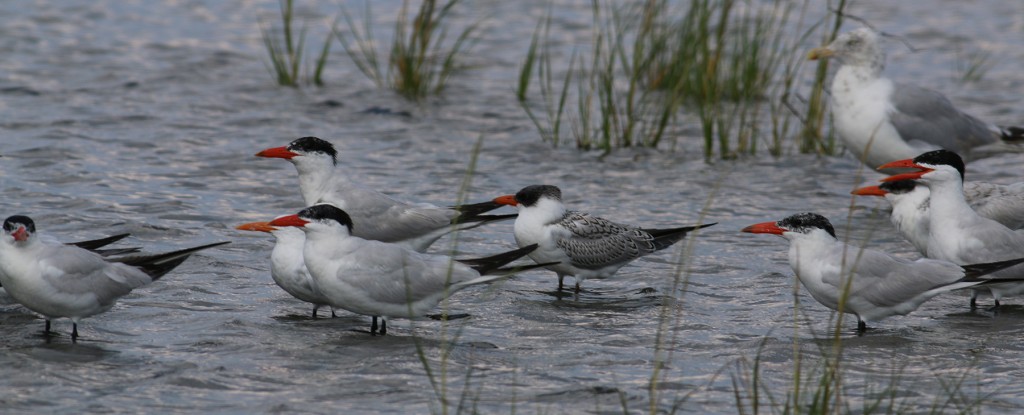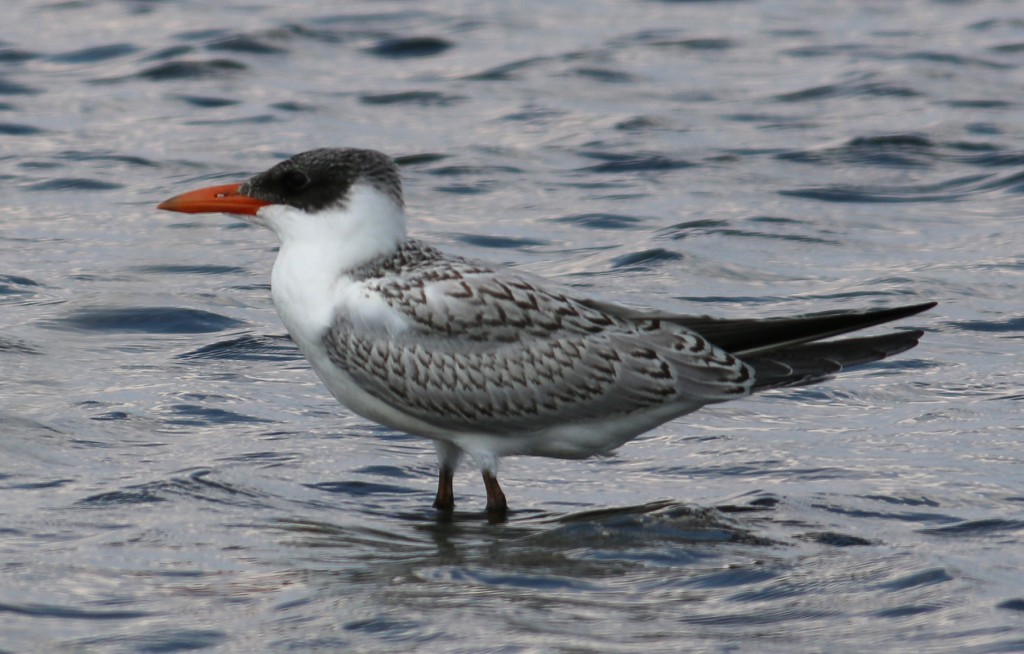Yesterday the star of the show was an American Golden-plover, but the Sedge Islands is a great location for observing and studying the terns at close quarters. We were more than entertained by them, especially the two larger tern species. First of all, the numbers were terrific, with at least 80 Royal Terns and 13 Caspian Terns. Second, one of the Royal Terns caught a fish that was probably too big for a single bird to eat or swallow, so at least two other nearby terns were displaying with their wings held in an interesting position. I would have expected that kind of begging behavior from immature birds, but the ‘begging’ birds seemed to be mature, based on their bill color. Here’s a couple photos where you can see the size of the fish and some of the displaying birds.

This Royal Tern started all the fuss by catching this fish. Notice the immature Royal Tern in the background, with the yellow bill.

Two Royal Terns then started displaying like this, with their wings pulled back and downward and partially open, and its crest raised. By their bill color, this looks like an adult. The immature birds in the area weren’t displaying.
The most interesting aspect of the Caspian Terns was seeing some immature birds. We get plenty of immature Royal Terns, but I don’t remember ever seeing immature Caspians here, so I don’t know if they don’t show up here normally or if I have just been non-observant. Here’s two of the immature birds.



